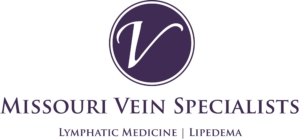Spider veins, or telangiectatic matting, are formed by the dilation of a small group of blood vessels located close to the surface of the skin. Although they can appear anywhere on the body, they are most commonly found on the face and legs. They are considered a cosmetic issue and usually pose no health hazard but may produce a dull aching in the legs after prolonged standing indicating a more serious venous disease.
These small, thin veins in the skin which measure less than 1 mm in diameter are very superficial and usually appear red in color because of the blood in the superficial veins. They are distinct from slightly larger veins measuring 1-3 mm in diameter, called reticular veins, which are slightly deeper under the skin and appear to be purple or blue in appearance.
Spider veins may be isolated due to progressive enlargement of tiny veins in the skin. Frequently, however, they develop because of abnormal underlying veins which are under high pressure and feed blood into the spider veins. These feeder veins are usually reticular veins in which the one-way valves have failed over time allowing gravity to pull blood downwards into the spider veins.
These failing veins can be a sign of underlying vein disease resulting in pain, tenderness, or swelling of the ankles. If the larger abnormal veins are not treated before treating the spider veins, treatment of the spider veins alone will not be successful. Since the underlying problems will still be forcing venous blood into the skin, causing the spider veins to form again. This is a common problem for patients who receive surface laser treatments or sclerotherapy for spider veins without first assessing the larger veins in the legs with a complete ultrasound vein screening.
What Causes Spider Veins?
The exact cause of spider veins is unknown, although heredity, pregnancy, trauma, aging, sun damage and hormonal influences are believed to be primary factors contributing to the condition. More than 40% of women have some form of varicose vein condition including spider veins, with an increasing incidence of venous disease as one gets older, so that up to 80% of women have some form of venous disease by age 80.
What Can I Do to Prevent Spider Veins?
First, listen to your body. Both spider and varicose veins tend to be a cosmetic concern; however, they can lead to serious health complications such as fatigue, night cramps, leg swelling or itching around certain veins. If you are experiencing any of these symptoms, you should contact us for a vein screening.
Staying active and maintaining a healthy weight can also help prevent spider and varicose veins. Activities such as walking, cycling and swimming all help to keep up blood circulation in the legs and will reduce pressure and blood pooling. Maintaining a healthy body weight will eliminate excess pressure on the legs that causes veins to surface.
It is also important to not sit or stand for long periods of time. Being in one position for an extended period of time can place pressure on veins. We recommend changing positions at least every 30 minutes to increase blood flow and flexing your calf muscles frequently to keep up circulation while sitting at a desk or during long car rides or flights.
Spider Vein Treatment in Kansas City and Marshall, MO
Sclerotherapy is used to eliminate the veins by injecting a solution directly into the vein and our laser treatments can treat both tiny superficial facial veins and deeper blue leg veins on men and women of all skin tones.
Treatments using sclerotherapy or laser can be very effective. Some patients may need only one treatment while others may need a number of treatments depending on the number of veins and the varying patients’ response to treatment.
Dr. Scott Darling, a Triple Board Certified Vein Specialist and Diplomate of the American Board of Venous and Lymphatic Medicine, has the expertise and knowledge to treat the full spectrum of vein disease. For the best spider vein treatments in Kansas City call 816-792-3400 to schedule your vein screening today.


